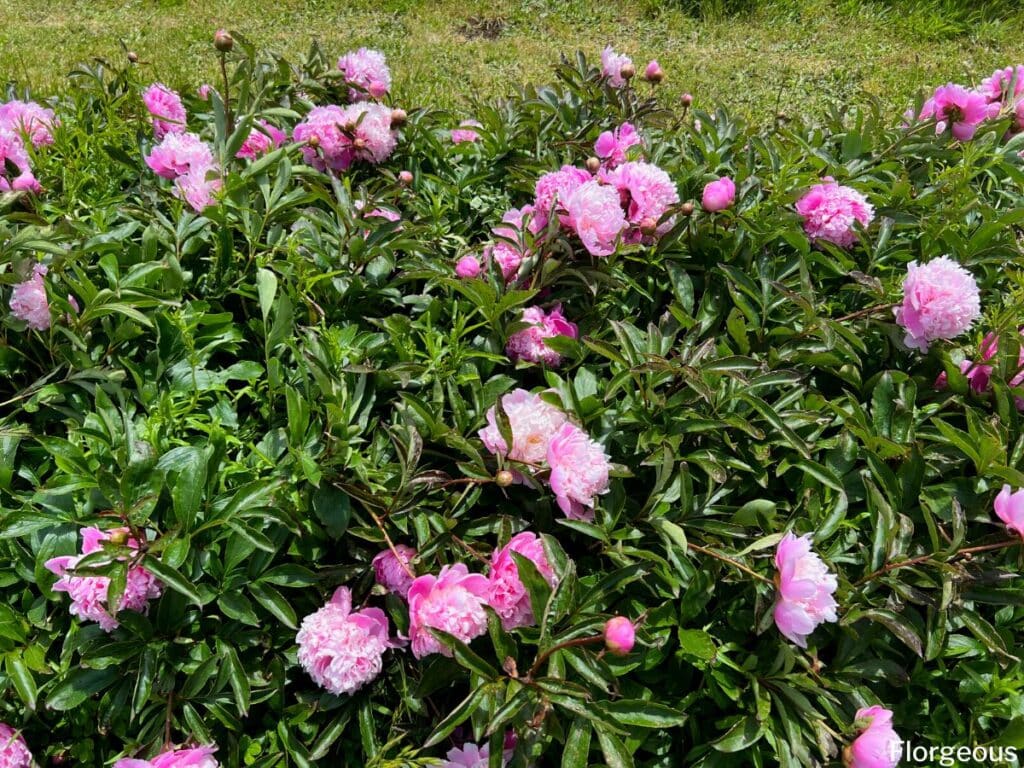Peonies (Paeonia) are known for their large flowers and are very common in ornamental gardens because they are easy to grow and don’t require too much maintenance.
These flowering plants with their dark green leaves and striking blooms are superb for adding more color to your garden and they can be very handy in cut flower arrangements. They are also edible and have quite a few medicinal uses.
These flowers tend to look their absolute best when they are paired with other plants that can add more contrast and texture to your garden bed.
In this guide, we are going to take a look at some of the best companion plants to pair with peonies flower for a more striking and beautiful garden.
What to Plant with Peony Flowers
Because the peonies bloom time is very short, companion plants are usually selected to accent the massive peony flowers, to add interest to your garden when the peonies are not in bloom, to fill out the garden bed, or to add more structure to your garden bed.
Even though these factors are important, the most important factor you should consider is the growing requirement. Only plants that have a similar growing requirement are going to grow happily next to peony plants.
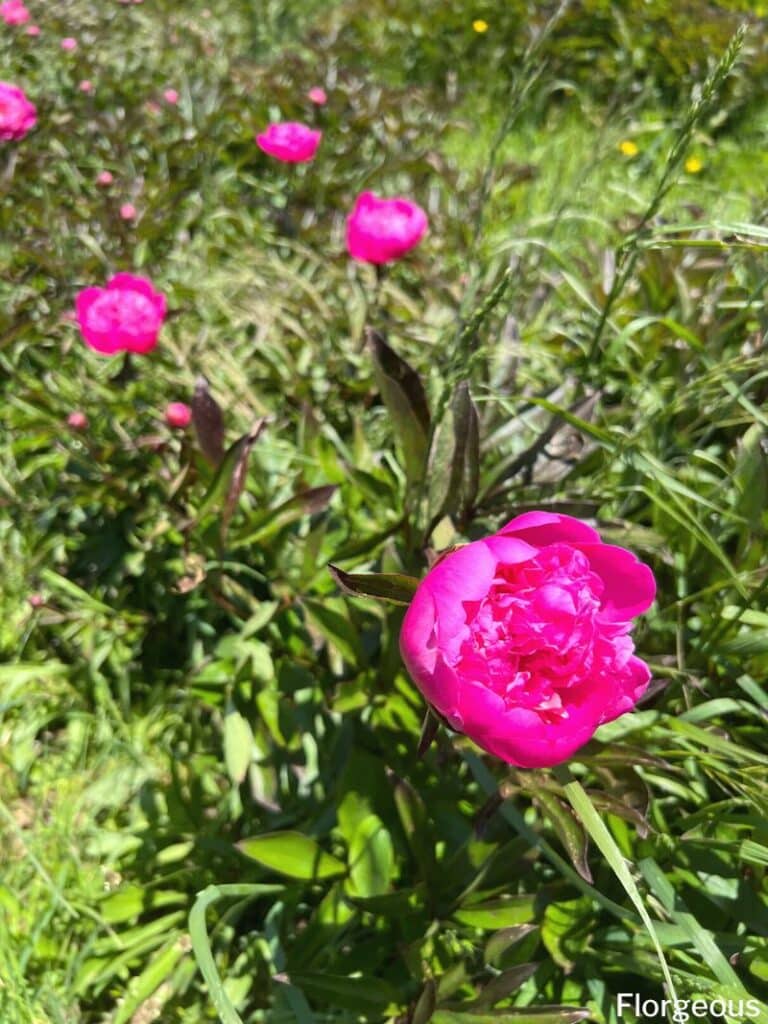
When growing peonies, you need to position them in full sun and in well-drained soil. You can add lots of plants to your garden bed but need to ensure that there is enough space between plants because peonies need air circulation.
Most peony types are also drought tolerant and should only be watered every week or once every two weeks or they can start developing root rot.
Now that you know a little bit more about the growing conditions of peonies, it is time to start looking for some good companions to include in your garden.
Alliums
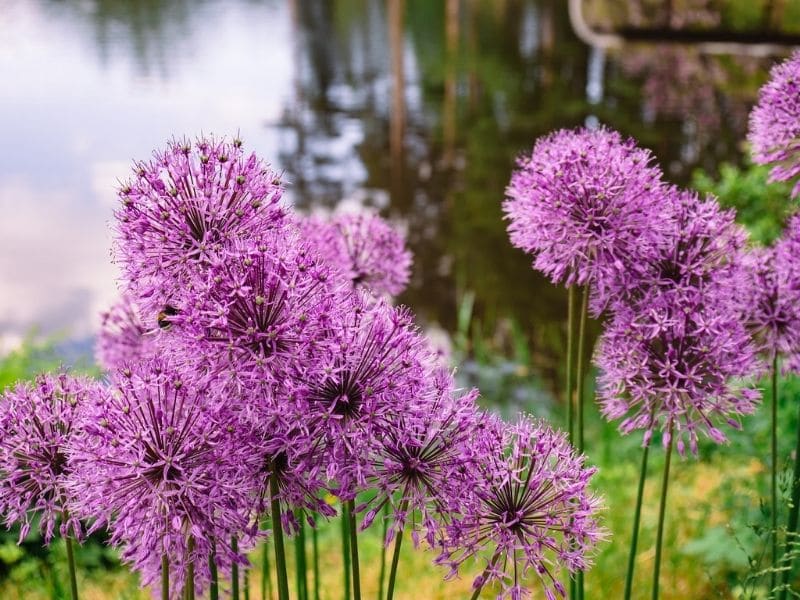
Alliums (Allium) are perfect companion plants for peonies because they are easy to grow, their grass-like leaves will add lots of texture to your garden and they produce beautiful purple flowers on tall spikes that can add lots of interest to your garden bed.
There are hundreds of different species of allium and many of these will look quite striking in your peony garden. The giant allium (Allium giganteum) is probably the most striking of the lot because it produces huge purple orbs that are real showstoppers. But purple wild garlic (Tulbaghia violacea) can also be a good option if you want to create a low-maintenance garden.
Allium plants grow happily in sunny spots and they can be established in any type of well-drained soil. These drought-tolerant plants don’t need too much watering and perennial varieties will spread all over the garden on their own.
When you pair these plants in the same garden bed, you should be careful to grow taller varieties in the back while shorter varieties of allium plants should be established in the front.
Irises
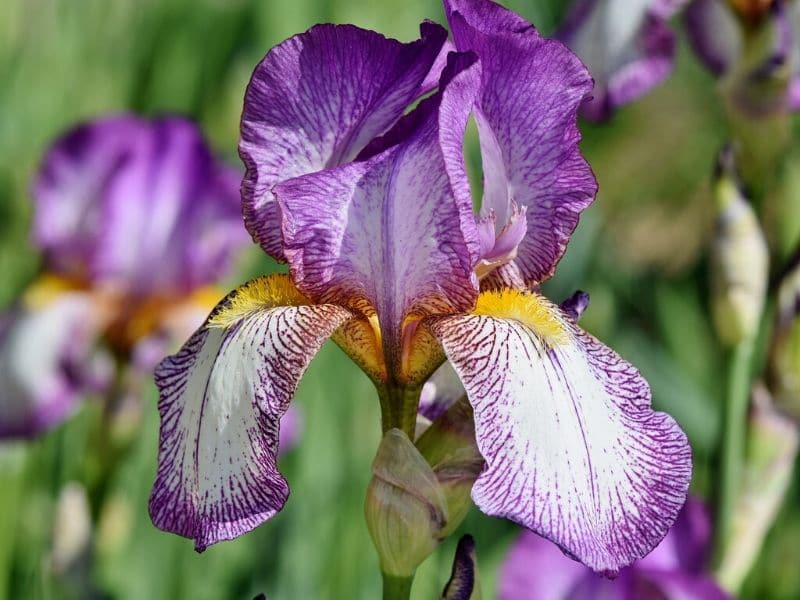
Bearded irises (Iris x Germanica), also known as the German bearded iris, is also a wonderful plant to add to your peony garden because it is easy to grow and also comes in a variety of colors like pink, purple, red, yellow, blue and orange. They will also attract lots of hummingbirds that will further enhance the beauty of your garden.
These iris plants should be positioned in a sunny spot in well-draining soil. They can tolerate most soil types and are relatively pest free. Once established, these perennials are also quite water-wise and only require shallow watering.
Some varieties of iris are rather short with a maximum height of just 15 inches and should be established in front of your peonies. Medium varieties like Siberian irises can be established between your peonies while taller varieties should be placed at the back of your garden.
Related: Plants that go well with iris
Bleeding Heart

Bleeding heart plants (Lamprocapnos) with their heart-shaped flower petals are very popular in gardening projects and can add lots of texture and interest to your peony garden during summer.
These deer-resistant plants are sun and heat-tolerant but they do prefer cooler areas and light shade. If you establish them in direct sun, you will need to water them more frequently since they do prefer moist soil.
You can establish shorter varieties with a height of six inches tall in front of your peonies where they can benefit from the light shade that the other foliage will create. Taller varieties of the bleeding heart can be planted amongst your peonies to fill out the garden.
Roses

Peonies blossom in the spring, but their dark green palmate foliage remains for the rest of the growing season, adding color and a wonderful backdrop for other plants such as roses.
There are lots of different rose varieties including many that have a color scheme that can match your peony blossoms. Roses will bloom from late spring to early fall and will add lots of color during this time. These displays will be especially spectacular during late spring when the peonies start to produce huge flowers.
Most rose varieties grow very well in sunny locations with good drainage. As with peonies, they enjoy good air circulation and need regular watering.
It is best to establish miniature roses amongst your peonies because they have a similar height to peonies and are great for adding lots of fuzzy texture to your garden. Taller rose varieties should be placed in the back so they won’t shield or cover up your peonies when they are in bloom.
See more: Rose bush companion plants
Lavender
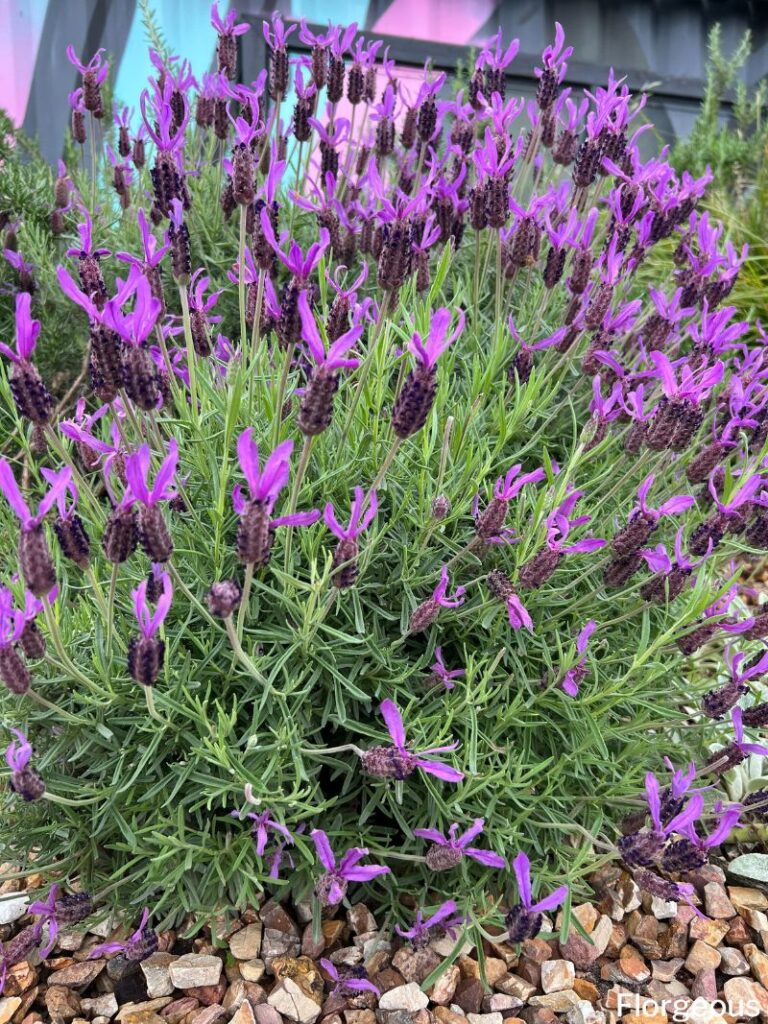
Lavender (Lavandula) is a plant that is favored by most gardeners because it creates such beautiful blooms, the herbaceous scent is very soothing and it is a perfect plant for those who want to create a low-maintenance garden.
Peonies and lavender are a lovely combination because they have a similar bloom time and the purple stalky flowers will add lots of visual interest along with the bright peonies.
Lavender grows well in direct sun and needs to be established in well-draining soil. This flowering plant is very drought tolerant but it will survive when watered regularly as long as the soil drains well. Keep this in mind when choosing lavender companions.
Because lavender is shorter, it is often used as a ground cover or border plant in front of peonies.
Daylilies

The daylily (Hemerocallis) is a flowering plant that is perfect for adding a lot of color to your garden because there are so many different varieties with different shades to choose from. You can choose daylilies with the same color as your peonies or select contrasting colors that are going to make your peonies stand out.
These are some of the easiest perennials to grow alongside peonies because they can survive in full sun to dappled shade and they will grow well in just about any type of well-draining soil as long as they receive regular watering.
You can grow daylilies among orange or yellow flowers. Their stalky leaves will add lots of texture to your garden, the foliage can offer year-round interest and the plant’s similar height won’t overpower your peonies too much.
Daylilies prefer fertile, slightly moist and well-drained soil. They thrive in full sun to partial shade, which is something you need to keep in mind when choosing daylily companions.
Hydrangeas
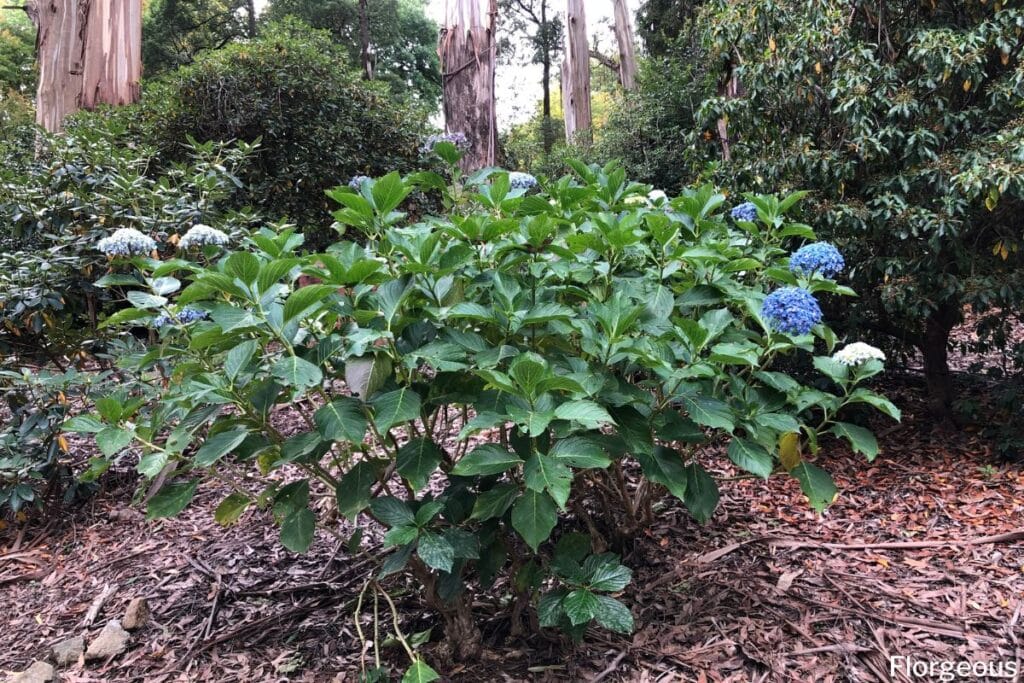
Hydrangeas (Hydrangea), also known as hortensia, is a great companion to add behind peonies. This is because these shrubs will create a great backdrop that can make your peonies stand out even more, especially if you choose muted hydrangea colors like white, light pink, or soft blue with a more vivid peony color.
Some varieties of hydrangea will bloom at the same time as peonies and can add lots of color during early summer. Other varieties are good for adding interest during early fall or spring because they will bloom at different times.
Hydrangeas need to be established in well-draining soil but they will need partial shade and more frequent watering compared to peonies. They grow best when planted in an area where they can have full morning sun with lots of afternoon shade.
These two plants have very different heights. It is best to establish hydrangeas in the back with your shorter plants in a row in the front where they might receive a little bit more sun.
See more: Plants that look good with hydrangeas
Ornamental grasses
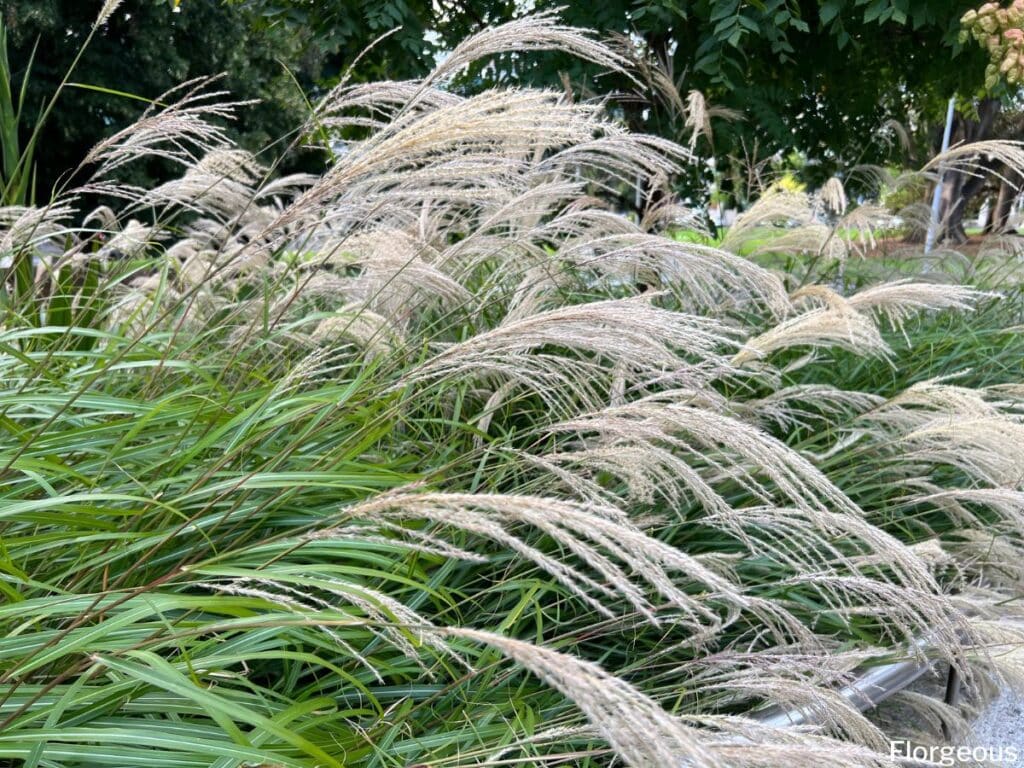
Pairing ornamental grasses with peonies elevates garden aesthetics by introducing contrasting textures and visual appeal. Grass varieties like fountain grass or feather reed grass complement the lush peony blooms, offering an elegant backdrop.
The combination extends seasonal interest and creates a dynamic garden environment. Beyond visual harmony, ornamental grasses attract beneficial insects and provide winter interest with their seed heads, enhancing biodiversity and year-round beauty in the garden.
What NOT to Plant with Peony Plants
Some plant varieties won’t grow as well next to your peonies because they might have a different growing requirement or they might just not stand out enough.
Let’s take a look at some plant combinations to avoid when planting peonies.
Plants that Attract Botrytis
Peonies are quite disease tolerant but they are vulnerable to botrytis. This fungal disease affects the buds, flowers, leaves, and bulbs of plants. It is best not to add too many plants like African violets, chrysanthemums, geraniums, or dahlias to your garden because an abundance of these species will increase your chances of getting this fungal infection.
Shade and Water Loving Plants
When you are pairing shade-loving plants like hydrangeas with your garden, you should be careful to establish them in an area where they will get lots of afternoon shade.
It is, however, best to avoid plants like ferns, hostas, and begonias in your garden because these will die if planted in direct sun and require too much water. These water-loving plants will cause root rot in your other plants while their shade-loving nature can impact your peony’s ability to bloom.
Final Thoughts
You should plant peonies alongside other fragrant plants to create an aromatic landscape that will delight the senses.
Because of the many different colors of peonies, it makes sense to pair them with a variety of flowers like irises, hydrangeas, daylilies, lavender, roses, bleeding hearts, and many other plant species. These combinations are great for creating a more eye-catching garden and we do hope that our guide made it easier for you to select the right neighboring plants.
If you are also growing other plant species in your garden then you should have a look at some of our other guides where we discuss other great plant combinations that can help you create a more beautiful garden.

